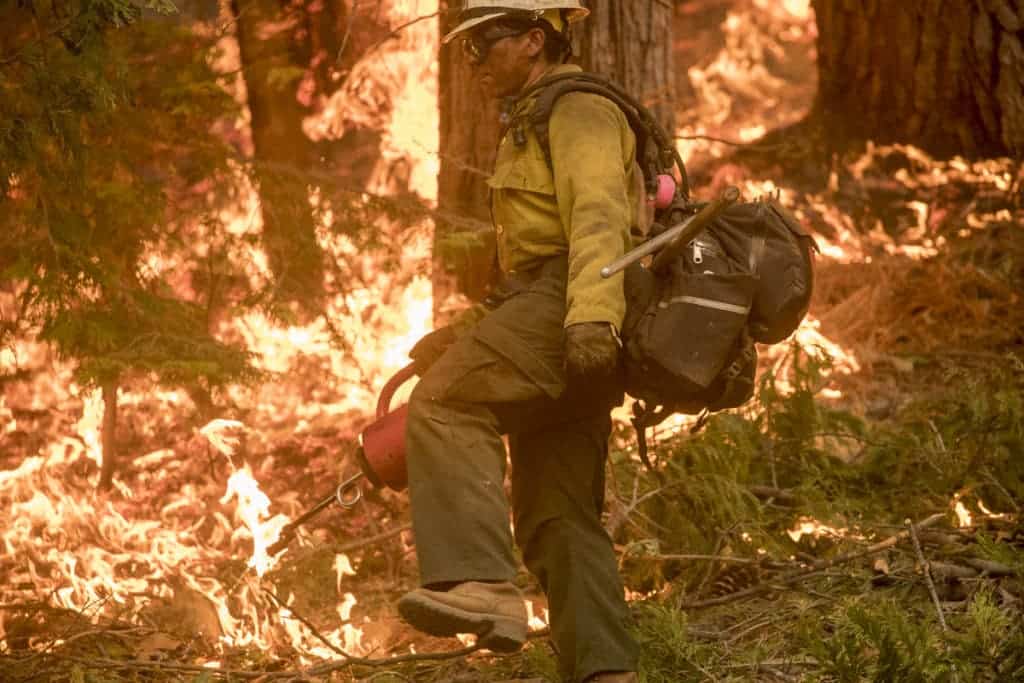As climate change continues to take its toll, more intense wildfires are expected. A team of researchers believes they have a way to tackle this phenomenon — but the solution is wildly unpopular.
“We need a colossal expansion of fuel treatments,” said study lead author Rebecca Miller, one of the study authors said.

Fuel and fire
Wildfires have always been devastating. They’re a natural phenomenon in many parts of the world, but deforestation and climate change are making things much worse, exacerbating fires way beyond their normal levels.
Not only is climate change driving drought, but it’s making things drier. This means that many plants, which are usually moist and would not readily burn have become fuel, spreading the fire and making it more powerful than it would naturally be.
The effect of this extra fuel has become apparent in the catastrophic Australia bushfires, which have already burned an estimated 18.6 million hectares (46 million acres), destroying some 5,900 buildings and killing 30 people and over 1 billion animals.
Now, the authors of a new study published in Nature Sustainability believe they have found a way to limit the effect of such fires. The study was focused on the California area but could apply to other drought-plagued areas, including Australia.
Essentially, they say that proactive vegetation treatment (which includes small, controlled fires) can substantially reduce the total burned area. Although this seems dangerous, it can reduce the amount of fuel available for uncontrolled fires.
“Prescribed burns are effective and safe,” said study co-author Chris Field, the Perry L. McCarty Director of the Stanford Woods Institute for the Environment and Melvin and Joan Lane Professor for Interdisciplinary Environmental Studies. “California needs to remove obstacles to their use so we can avoid more devastating wildfires.”
Fire suppression efforts in California have been somewhat successful, but they’ve also led to a massive accumulation of wood and plant fuel in forests. This means that when a fire does go out of control, it can grow to terrifying strengths.
The controlled burns, especially in conjunction with vegetation thinning, have multiple effects. They provide the same environmental benefits as natural fires (such as reducing the spread of insects and increasing species diversity) and rarely escape beyond the confined area.
To make a significant difference, California needs to deploy treatments on nearly 20% of the state’s land area, the study finds — be it controlled fires or vegetation thinning. California is already deploying ambitious fire control measures, but the recommended measures are even more ambitious.
A rewarding but unpopular solution

The problem, however, is that no one really wants to do controlled fires anymore. Researchers carried out interviews with policymakers and government employees, finding that everyone is extremely risk-averse, taking decisions in the shadow of liability laws — burners would be held responsible for every fire that escapes the controlled area, even if the net effect is positive. The system works in a counterproductive way, researchers found.
Essentially, federal employees don’t get any reward if the prescribed burns are successful and reduce burn area, but are heavily punished for any accident regarding escaped fires. So you can have a situation where the net area of the fires is reduced, but where one controlled fire caused minor, unanticipated damage — and the employees would still be sanctioned
To make matters even more touchy, negative public opinion also places more pressure on federal agencies, making the approach even more undesirable.
Controlled fires are almost a traditional solution, but they’ve become less and less popular. Deploying this approach would require quite a bit of innovation — if not on the technical side, then definitely on the legislative and organizational side. Essentially, agencies need to reorganize and be capable of handling the risks, especially when they are heavily outweighed by positive outcomes. This also needs to be communicated effectively so that public opinion understands the general picture and what is at stake.
We can only hope that policymakers can make the right decision and implement these changes. It’s not an easy task, but it can be done. With climate change coming into force, this is more important than ever.
“As catastrophic climate impacts intensify, societies increasingly need to innovate to keep people safe,” said study co-author Katharine Mach, an associate professor at the University of Miami who was director of the Stanford Environment Assessment Facility and senior research scientist in the Stanford School of Earth, Energy & Environmental Sciences at the time of the research. “Much of this innovation is conceptually simple: making sure the full portfolio of responses, prescribed burns and beyond, can be deployed.”
The study has been published in Nature Sustainability.









